All the New Aircraft Carriers That Are Under Construction
An update on the world of flat-tops.
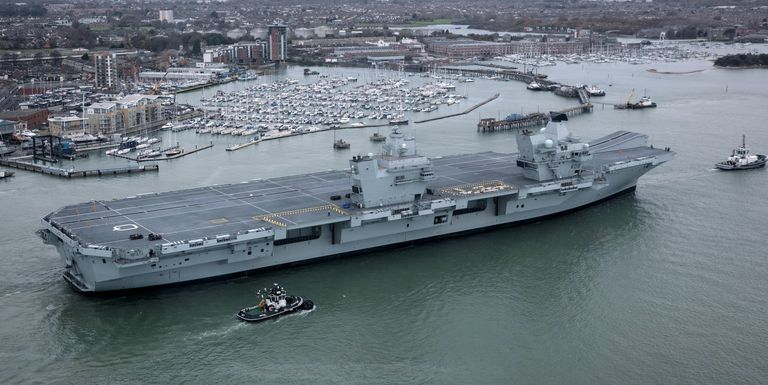
GETTY IMAGES
By Kyle Mizokami
Building an aircraft carrier is a long and laborious process, one that costs billions of dollars and takes years to complete. Since we last cataloged every aircraft carrier in the world, the world’s navies have only received two new aircraft carriers, but several more are in the shipyards under construction or have been announced. Furthermore, a number of navies are building ships or have built large ships that may soon accommodate fixed wing fighters, specifically the F-35B Joint Strike Fighter.
Here's a look at what's in store.
United States of America
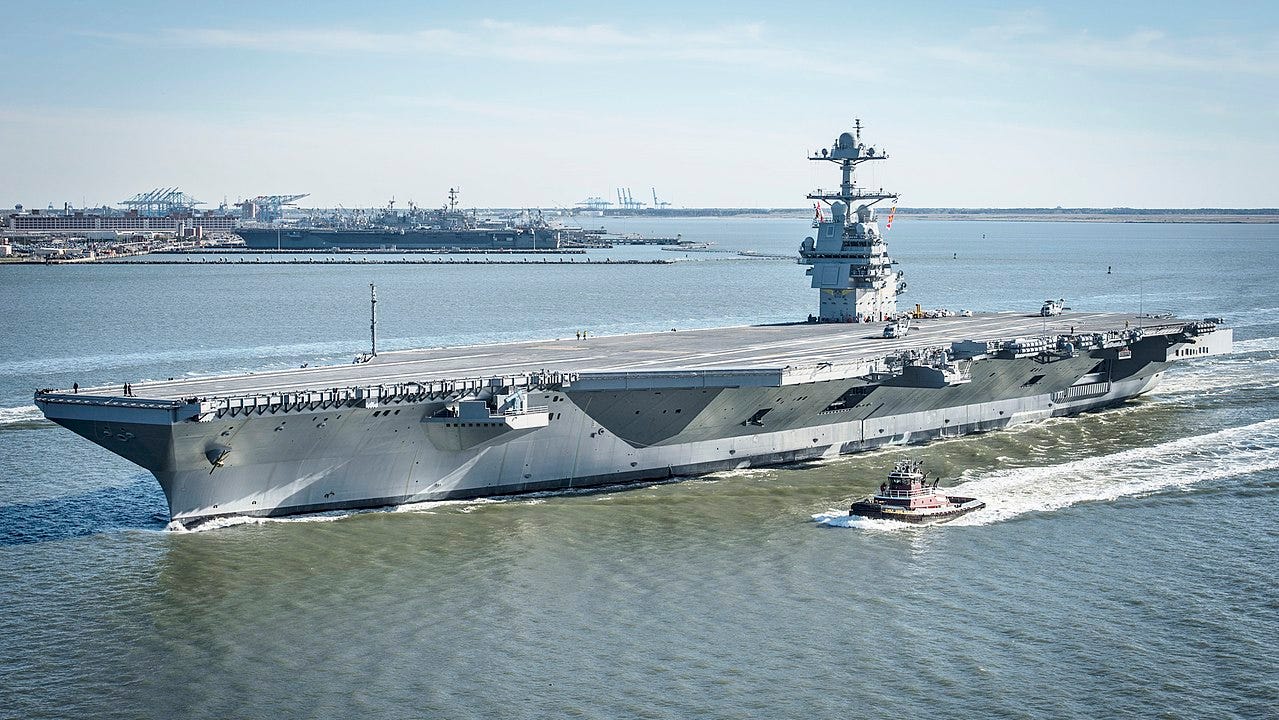
WIKIMEDIA COMMONS
The U.S. Navy currently operates eleven aircraft carriers, the ten carriers of the older Nimitz class and the USS Gerald R. Ford, the first of the Ford-class carriers. The $17 billion Ford was commissioned into the Navy in July 2017. America’s latest flat-top is 1,106 feet long and displaces 100,000 tons. Despite its size, the carrier can plow through the seas at more than thirty knots an hour, thanks to two A1B nuclear reactors.
Ford has a number of technological improvements baked into the ship, including an Electromagnetic Aircraft Launch System, or EMALS, which uses electromagnetic propulsion to catapult aircraft into the air. EMALS is a substantial improvement over conventional steam-powered aircraft catapults, reducing wear and tear on the airplane and resulting in a smoother launch for pilots, but it has had significant development issues. Ford is also the first carrier to use the new Advanced Arresting Gear, which reduces wear and tear incurred on aircraft during carrier landings. The two technologies should also result in the carrier’s ability to launch and recover more planes on a daily basis than the Nimitz-class.
The ship will carry a typical 60+ airplane carrier air wing centered around four squadrons of F-18E/F Super Hornet strike fighters but can probably fit at least two dozen more. During the Cold War, Nimitz-class carriers with less deck space and even larger aircraft routinely carried more than 90 aircraft at a time.
Ford-class carriers will eventually replace the older Nimitz ships. The second ship in class, USS John F. Kennedy, was reported by Huntington Ingalls Industries as fifty percent structurally complete as of July 2017. The third ship, USS Enterprise, began advanced construction on August 24th, 2017. Talks are underway to award the contract for the fourth unnamed ship.
In addition to aircraft carriers, the U.S. Navy launched the USS Tripoli, an America-class amphibious assault ship in May 2017, with an eye towards commissioning in 2018. The America-class ships are designed to launch aircraft in support of amphibious landings and can operate a mix of U.S. Marine Corps attack, transport, and utility helicopters, Osprey tilt-rotor transports, and the F-35B Joint Strike Fighter. A third ship, USS Bougainville, is scheduled to begin construction in late 2018.
China

GETTY IMAGESVCG
China is steaming full speed ahead to field a fleet of at least three combat-ready carriers. After the 2012 commissioning of the training carrier Liaoning, the country quickly began construction of a second carrier, known only as 001A at this point. Launched in 2017, 001A is similar to Liaoning but makes a number of modest improvements.
Meanwhile a third carrier, 002, is currently fitting out at the Jiangnan Changxingdao Shipyards at Shanghai. 002 will be considerably larger than the previous two carriers though still only eighty percent the size of the Ford-class carriers. The ship will also ditch the use of a ski ramp to launch aircraft and instead use a Chinese version of the Ford’s EMALS system. The use of EMALS will allow the new Chinese carrier to launch and recover more types of aircraft with heavier weapons and fuel loads.
United Kingdom
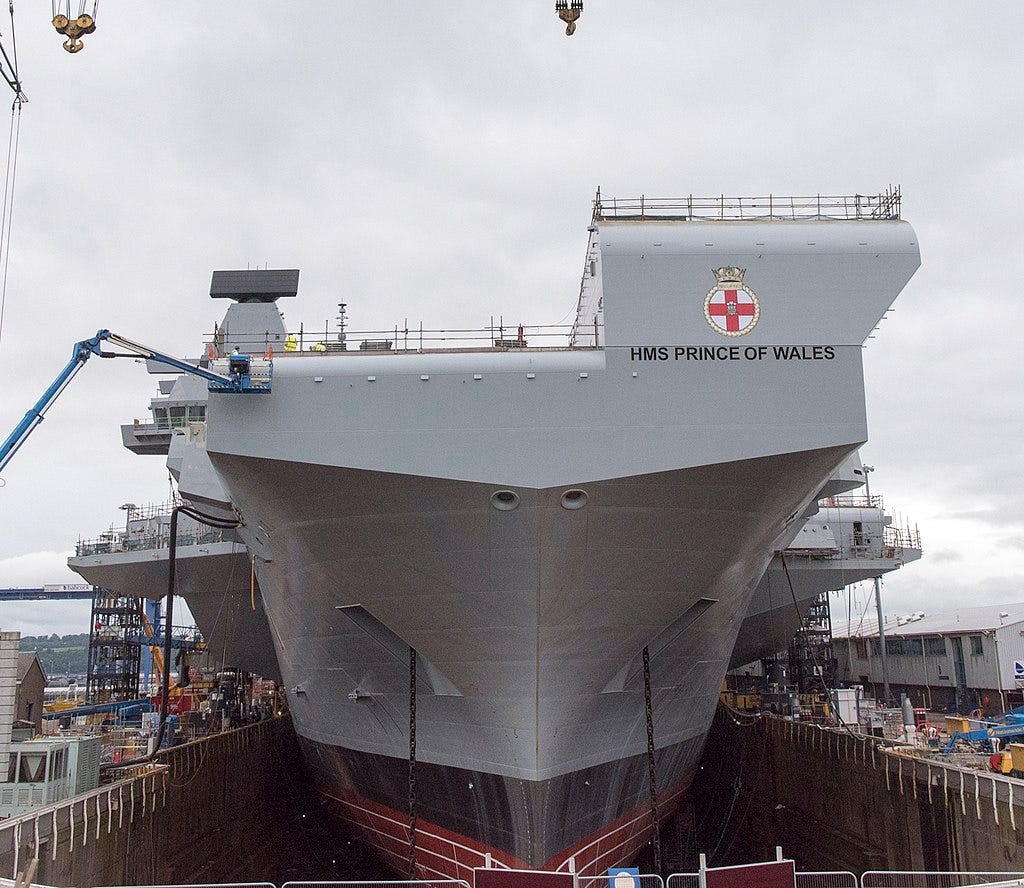
WIKIMEDIA COMMONS
The Royal Navy is continuing course on its plans to field a force of two carriers. The first carrier, HMS Queen Elizabeth, was commissioned in 2017 and is awaiting the F-35B Joint Strike Fighters that will make up her air wing, which should be ready by 2020. The second carrier, HMS Prince of Wales, was floated out of construction dock in late December 2017 and will undergo sea trials in 2019. Each of the two carriers will carry 12 F-35B fighters, the vertical takeoff and landing version of the Joint Strike Fighter preferred by the U.S. Marine Corps, with the ability to embark up to 36 of the fighters in a crisis.
India

WIKIMEDIA COMMONS
Long an aircraft carrier power, the Indian Navy currently sails one carrier, INS Vikramaditya. A second carrier, Indigenous Aircraft Carrier-1 (IAC-1), began construction in 2005. The ship has recently been named INS Vikrant and is projected to be complete in 2020. At 831 feet long and displacing 40,000 tons, Vikrant is the largest warship ever produced in India. The ship will carry 20 Russian-made MiG-29K fighters.
Japan
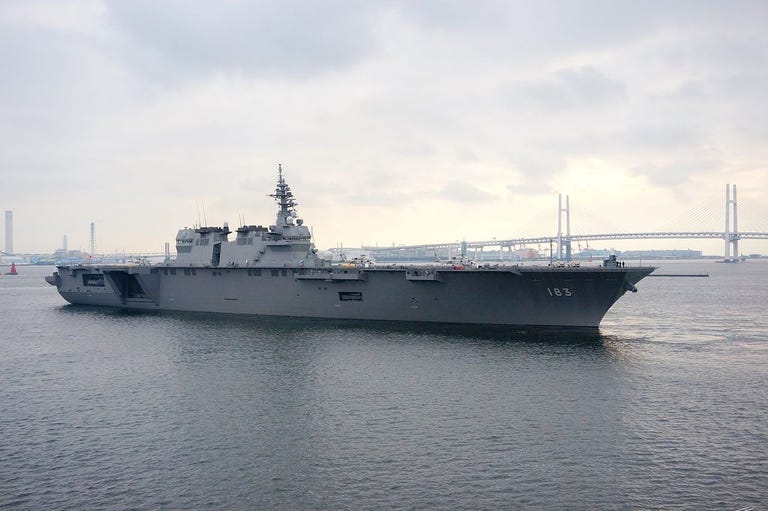
WIKIMEDIA COMMONS
Japan has not begun construction or announced any new aircraft carriers, but according to reports is considering a major break in policy and assigning fixed-wing aircraft to them. If they do, that would technically mean Japan will have new aircraft carriers.
In late 2017, Japanese news outlets reported Tokyo was considering modifying its two Izumo-class helicopter destroyers, Izumo and Kaga, to fly the F-35B Joint Strike Fighter. Chinese pressure on Japanese airspace over the Senkaku Islands and East China Sea and a shortage of airfields in the area were cited as reasons.
The two Izumo-class helicopter destroyers, with their full-length flight decks, aircraft elevators, and expansive hangars are pretty much aircraft carriers in all but name. The 813 foot long ships could probably carry six to eight F-35Bs, although the ships would need modifications to increase storage for weapons, fuel, and a thermoresistant coating on the flight deck to withstand intense heat from the F-35B’s engines.
Italy

FINCANTIERI
In 2017, Italian defense contractor Fincantieri began construction of the Trieste, a new amphibious assault ship. Similar to the America-class amphibious ships but at 803 feet long smaller than its U.S. Navy counterparts, Trieste will be designed to transport and land a battalion of Italy’s San Marco marine regiment. Trieste is designed to carry transport helicopters and a decision will be made later on whether or not to accommodate the F-35B Joint Strike Fighter. Italy already has one carrier, the Cavour, which will embark the F-35B.
South Korea
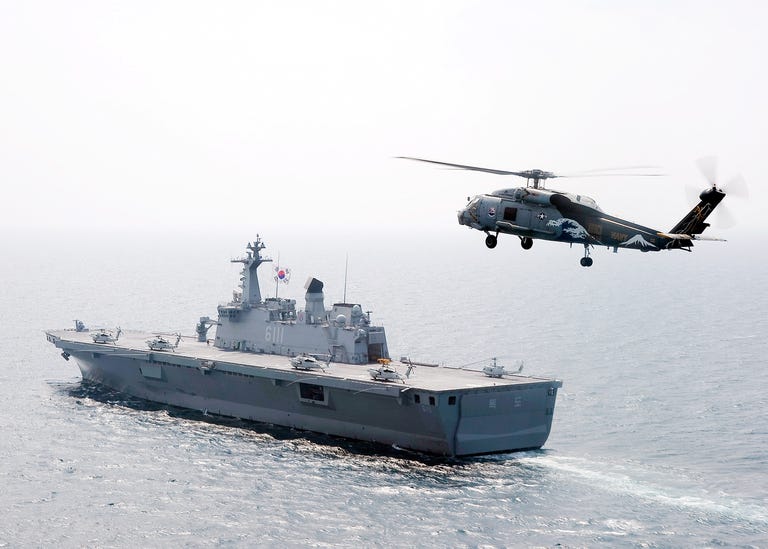
WIKIMEDIA COMMONS
South Korea has one amphibious assault ship with a full-length flight deck, Dokdo, commissioned into the Republic of Korea Navy in 2007. A second long-planned ship, Marado, finally began construction in 2017. A third ship, Baengnyeong, is projected but has not yet begun construction.
In December 2017 South Korea, like Japan, also reported interest in flying the F-35B off its Dokdo-class ships. Like Japan’s ships, the Dokdo vessels will need extensive upgrades to make this conversion a reality.
No comments:
Post a Comment